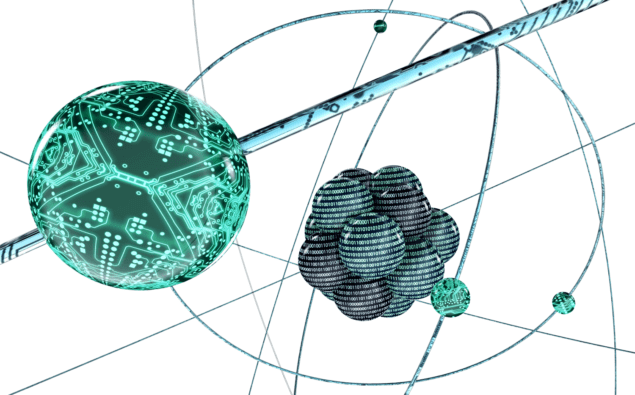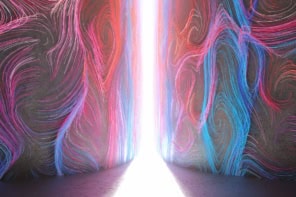
The minimum amount energy needed to erase a quantum bit (qubit) of information has been measured for the first time. Using a trapped ion as a qubit, Mang Feng of the Chinese Academy of Sciences in Wuhan and colleagues have confirmed that “Landauer’s principle” applies to quantum information as well as classical information.
Devised in 1961 by the German–American physicist Rolf Landauer, the principle says that the irreversible erasure of information involves the dissipation of heat. This confirmation in the quantum realm could lead to the development of practical erasure systems for quantum computers.
One important example of Landauer’s principle is the “reset-to-one” process, whereby a bit of information, which can be either 0 or 1, is reset to 1. As the bit can no longer have one of two possible values, its entropy – or randomness – is reduced. And given that the bit and its surroundings are physical entities that must obey the laws of thermodynamics, the entropy must therefore be transferred from the bit to its surroundings as heat.
Tiny amount of heat
Landauer’s principle says that a minimum amount of heat – about 10-21 J per erased bit – must be dissipated when information is destroyed. This is a tiny amount of energy and it was not until 2012 that physicists in Germany and France were able to confirm the principle, using a tiny silica bead trapped in optical tweezers as an unlikely datum bit.
While a classical bit can be either 0 or 1, a qubit can be in a combination of both states at the same time. However, Landauer’s principle should also apply, predicting a similar minimum amount of heat dissipated.
Now, Feng and colleagues have verified this notion by storing and then erasing information held in a single ion of calcium-40 that is trapped at ultracold temperatures using magnetic fields. Information was stored in terms of whether the ion is in one of two internal quantum states dubbed 0 and 1. The ion can vibrate within the trap and can therefore exchange heat energy with its surroundings via transitions between its quantized vibrational modes.
Maximally mixed
Using a series of laser pulses, the ion qubit was first put into a quantum state in which the 0 and 1 states are equally populated. This is a state of maximal entropy called a “maximally mixed state”. A laser pulse then couples the internal states of the ion to its vibrational motion, which allows the ion togive up energy to its surroundings. This process results in the partial erasure of the quantum information as well as the conversion of entropy into heat.

Wiping data will cost you energy
By repeating the process many times while monitoring the internal quantum state and vibrational modes of the ion, Feng and colleagues were able to confirm that Landauer’s principle applies in the quantum regime.
Writing in Physical Review Letters, the team describes its work as “an imperative step towards better understanding of the fundamental physical limitations of irreversible logic operations at the quantum level”. The researchers also hope that their work will aid in the design of an “artificial quantum reservoir” that would initialize quantum computers of the future by rapidly removing encoded information from large numbers of qubits. They caution, however, that the development of a practical erasure system will be a challenge because quantum erasure requires more heat to do than in classical systems – because of correlations between the qubit and the heat reservoir.



